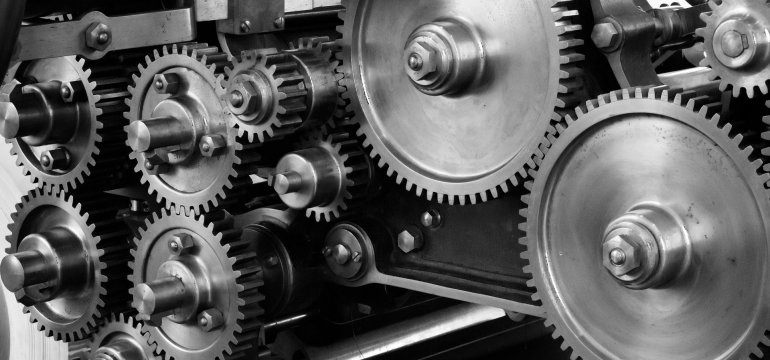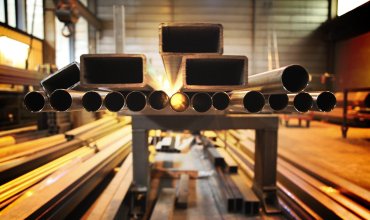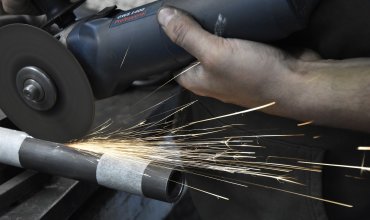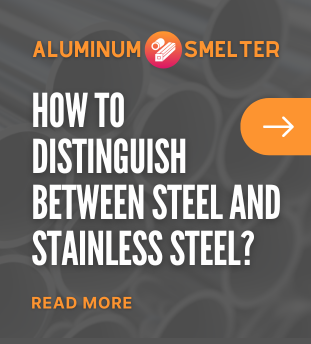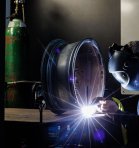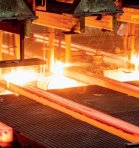In the fast-paced world of technology and engineering, choosing the right materials is critical. Every project, whether individual or industrial, requires materials that are not only durable and reliable, but also properly adapted to specific operating conditions. In Poland, as in the rest of the world, stainless steel and titanium steel are the two most frequently chosen materials in many industries. In the following article, we will conduct a detailed comparison of these two extremely useful metals, evaluating their properties and applications. We hope this will help you choose the best material for your desired applications.
Chemical composition and structure
Stainless steel, known for its high corrosion resistance, is an alloy of iron with an admixture of chromium, which typically makes up 10% to 30% of the composition. The addition of chromium contributes to the formation of a thin oxide layer that protects the surface from moisture and chemicals. It is also often enriched with nickel, manganese or carbon, improving its mechanical properties and heat resistance.
Titanium steel, on the other hand, although often confused with other titanium alloys, has superior lightness compared to its steel cousin. It is an alloy of mostly titanium with aluminum and vanadium. Titanium, as the basic component, is characterized by exceptional mechanical strength and resistance to extreme environmental conditions. As a result, although more expensive, it is widely used where the weight of the structure is crucial.
Mechanical properties
In terms of strength, both stainless steel and titanium steel do not stand out significantly from each other. Stainless steel, especially in austenitic alloys, has a very high tensile strength, making it an ideal material for bridges, buildings or various types of mechanical structures. Its high density provides robustness, but also considerable weight, which can be a disadvantage in some applications.
On the other hand, titanium steel, with a much lower density, is much lighter, making it ideal for aerospace, automotive or medical applications. It also has excellent fatigue resistance, which is crucial in applications requiring long-term reliability.
Corrosion resistance
Stainless steel is renowned for its resistance to corrosion, making it the first choice in environments where the metal is exposed to moisture and chemicals, such as production halls and industrial kitchens. Chromium is a key element that allows it to form a protective layer that shields the surface from damaging external agents.
Titanium steel also offers excellent corrosion resistance and even outperforms stainless steel in aggressive chemical and high temperature conditions. Thanks to titanium's properties, this alloy is resistant to most acids and alkaline substances, making it a preferred material in the chemical and petroleum industries.
Industrial applications
In Poland, stainless steel is widely used in the construction, food and chemical industries. It is the material of first choice for interior installations such as railings, sinks, cutlery and pots. Its resistance to corrosion and ease of cleaning contribute to its popularity in domestic and architectural applications.
Titanium steel, on the other hand, although more expensive, is irreplaceable in aviation, medicine and space technology. Its light weight combined with high mechanical strength makes it an ideal choice for aircraft structures, medical implants or machine components, where weight reduction without compromising on strength is crucial.
Pricing and availability
Price is often a critical factor in material selection. Stainless steel, due to its ubiquity and lower production costs, is much cheaper and more available on the market. In Poland, manufacturers offer a wide range of alloys that meet most basic industrial and construction needs.
Titanium steel, or rather titanium alloys, are much more expensive due to the complex process of mining and processing. This limits its use to applications where the material's properties outweigh the cost of production, and the investment in the more expensive material pays off in the long run.
Ecology and processing
The issue of ecology and recyclability are increasingly important for modern companies. Stainless steel is a fully recyclable material, which makes it ecologically attractive. Its production, however, is energy-intensive, although sustainable materials management helps reduce environmental impact.
Titanium steel can also be recycled, but the process is more complicated and costly. Nevertheless, the processing of titanium waste also takes place and contributes to reducing the environmental impact.
Summary
In conclusion, stainless steel and titanium steel are two extremely valuable materials that are widely used in many industries. The decision to choose one or the other should depend on the specific needs and budget of the project. Stainless steel offers an excellent combination of strength, corrosion resistance and affordability, while titanium steel provides exceptional lightness and strength, albeit at a higher price. We hope the information provided will help you make the right choice and contribute to the success of your projects!


